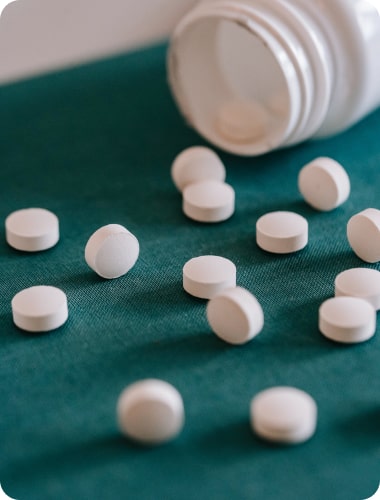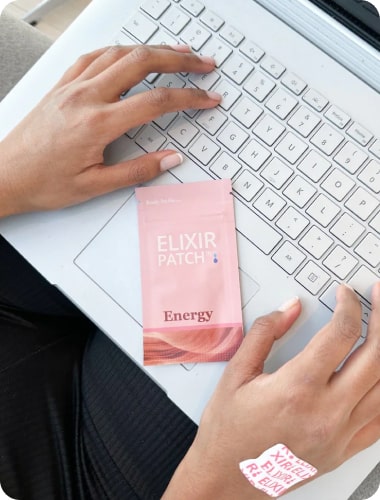
NAD vs NAD+ vs NADH: A Comprehensive Guide to These Essential Coenzymes
You might have heard about NAD therapy lately, whether in your favorite health magazine or from a celebrity. But did you know this health supplement can help you in more ways than you think? Nicotinamide adenine dinucleotide, or NAD, is a vital coenzyme in every living cell. It’s essential for hundreds of metabolic processes, crucial in how our bodies function, produce energy, and even age. But NAD doesn’t work alone. It exists in different forms, primarily NAD+ and NADH, each with distinct roles.
This blog will explore the fascinating world of NAD, breaking down the differences between NAD, NAD+, and NADH. We’ll uncover why knowing these distinctions is vital for your health.
Oxidation and Reduction: The Foundation
Before we dive into the specifics of NAD, NAD+, and NADH, we must grasp the fundamental concepts of oxidation and reduction. These are two sides of the same coin, representing chemical processes involving the transfer of electrons between molecules.
Oxidation is a chemical process when a substance comes in contact with oxygen and loses electrons. Think of it like a delivery truck unloading its cargo.
Reduction is a chemical reaction in which a substance gains electrons, like a molecule “recharged” with these tiny particles.
Both of the above processes are vital for energy production in our bodies. During cellular respiration, nutrients are broken down, and electrons are transferred from one molecule to another, ultimately generating ATP (adenosine triphosphate), the energy currency of our cells. NAD plays a crucial role in facilitating these electron transfers.
NAD: The General Term
NAD is an umbrella term that encompasses both NAD+ and NADH. It’s like referring to a battery – it can be charged (NAD+) or discharged (NADH). While NAD is a commonly used term, it’s essential to be specific when discussing the different forms, as they have distinct functions.
NAD+: The Oxidized Form
NAD+ is the oxidized form of NAD. This means it has lost electrons and is ready to accept them, like an empty truck waiting to be loaded. NAD+ is a crucial player in many metabolic processes, including:
- Energy production: NAD+ acts as an electron acceptor in glycolysis and the citric acid cycle (Krebs cycle), two key stages of cellular respiration.
- DNA repair: NAD+ is involved in repairing damaged DNA, helping maintain our genetic code’s integrity.
- Cellular signaling: NAD+ participates in various signaling pathways, influencing cell growth, differentiation, and cell death.
- NAD+ and Aging: Research suggests that NAD+ levels decline, possibly contributing to age-related health issues. This has sparked interest in NAD+ boosting therapies to promote healthy aging.
NADH: The Reduced Form
NADH is the reduced form of NAD. It has gained electrons and is carrying them like a fully loaded truck. NADH plays a vital role in:
- ATP production: NADH delivers electrons to the electron transport chain, the final stage of cellular respiration, where ATP is generated.
- Antioxidant defense: NADH can donate electrons to neutralize free radicals, protecting cells from oxidative damage.
The NAD+ and NADH Cycle: A Dynamic Duo
NAD+ and NADH constantly exchange electrons in a cycle that fuels cellular energy production. NAD+ accepts electrons and becomes NADH. NADH then donates these electrons to the electron transport chain, converting them back to NAD+ to continue the cycle. This continuous exchange is essential for maintaining the flow of electrons that cells need for energy production.
Importance of Maintaining Balance
A proper balance between NAD+ and NADH is crucial for optimal cellular function. When NAD+ levels drop, the NAD+/NADH cycle becomes less efficient, reducing energy production, impaired DNA repair, and overall cellular dysfunction. As we age, NAD+ levels naturally decrease, contributing to fatigue, cognitive decline, and a higher risk of age-related diseases. Replenishing NAD+ levels is a potential way to restore this balance and support healthy aging.
Replenishing NAD+: Exploring Your Options

As NAD+ levels decline with age, there’s growing interest in replenishing them to support healthy aging and overall well-being. While oral NAD+ supplements are widely available, their effectiveness can be limited due to low bioavailability. For those seeking more impactful and efficient ways to boost NAD+ levels, consider these alternatives:
-
NAD+ Nasal Spray
NAD+ nasal sprays offer a promising approach to replenishing NAD+ levels. This method allows NAD+ to bypass the digestive system and enter the bloodstream more directly, potentially offering better absorption than oral supplements.
Benefits:
- Ease of use! Simply spray it into your nasal passages.
- Potentially higher bioavailability than oral supplements.
- It is potent for targeted benefits for cognitive and neurological health.
-
NAD+ IV Drips
NAD+ IV therapy is considered one of the most effective ways to increase NAD+ levels rapidly. By delivering NAD+ directly into the bloodstream, IV infusions maximize absorption and provide faster results. This method is often used for addressing conditions like chronic fatigue, cognitive decline, and addiction recovery.
Benefits:
- Highest bioavailability.
- Fast-acting results.
-
NAD+ Injections
Similar to IV drips, NAD+ injections provide direct delivery of NAD+ into the body. While potentially quicker and more convenient than IV therapy, injections may not offer the same sustained release of NAD+.
Benefits:
- It is faster and easier to administer than IV therapy.
- It may be suitable for those who prefer injections over IV infusions.
-
Oral NAD+ Supplements
While oral NAD+ supplements are a common choice, they face challenges in reaching their full potential due to limited bioavailability.
Limitations:
- Low absorption rate: A significant portion of the NAD+ is broken down in the digestive system before it can reach the bloodstream.
- Due to limited absorption, it may take longer to experience the benefits.
Choosing the Right Method
Selecting the best NAD+ replenishment method depends on your health goals and needs. Consulting with a healthcare professional can help determine the most suitable option based on lifestyle, convenience, and desired outcomes.
In its various forms, NAD is a crucial player in countless cellular processes, impacting everything from energy production to DNA repair and aging. After reading about the differences between NAD, NAD+, and NADH, we believe you have understood the benefits of NAD+-boosting therapies. If you want to explore how NAD+ therapy could benefit you, contact your nearest IV Drips center!
Elevate your Overall Wellness with NAD+ Therapy

At IV Drips, we’re committed to helping you achieve optimal health and vitality. We offer a range of NAD+ therapy options to revitalize your cells and enhance your well-being. We understand that each individual has unique needs and preferences. That’s why we provide various NAD+ therapy options to suit your lifestyle:
- NAD+ Infusions: Experience the full benefits of NAD+ therapy with our expertly administered IV infusions formulated for maximum absorption and efficacy.
- NAD+ Self-Injections: For those seeking convenience and flexibility, our self-injection option allows you to manage your NAD+ therapy from the comfort of your home.
- NAD+ Nasal Spray: Our convenient and easy-to-use nasal spray delivers NAD+ directly to your system, offering a unique absorption method for potential cognitive and neurological benefits.
How NAD+ Therapy Can Benefit You:
- Boost energy levels and reduce fatigue
- Improve cognitive function and mental clarity
- Enhance overall mood and well-being
- Support cellular health and rejuvenation
Ready to Experience the Benefits of NAD+ Therapy? Contact IV Drips today!
Posted on behalf of IVDrips









